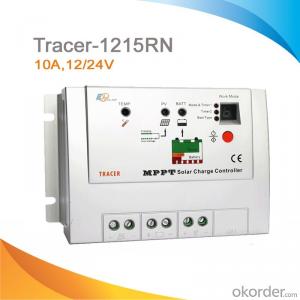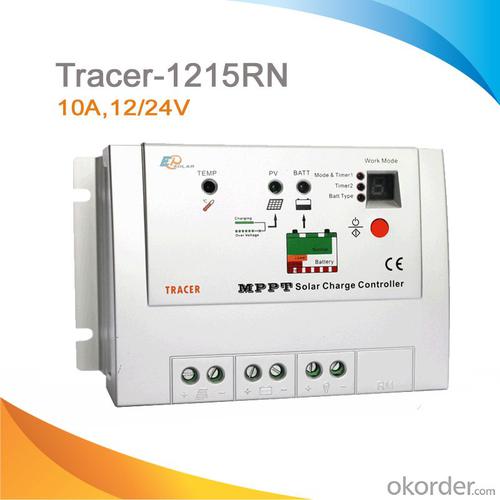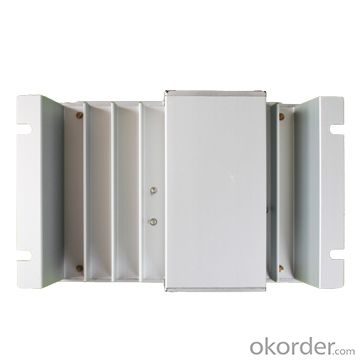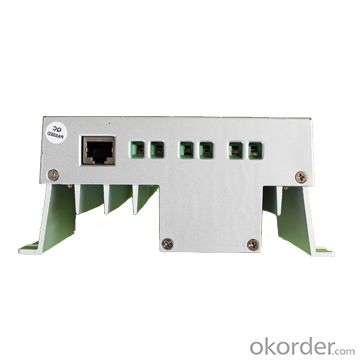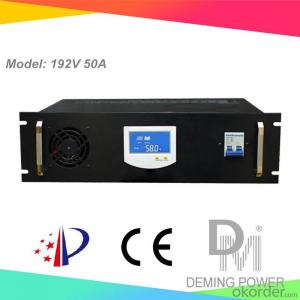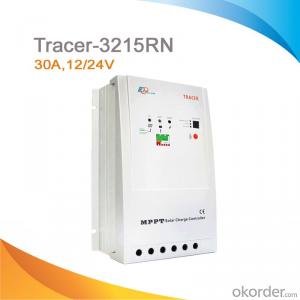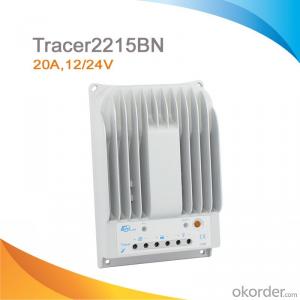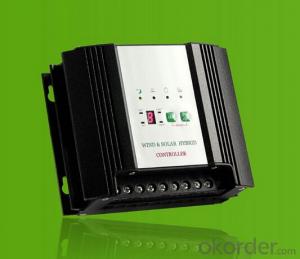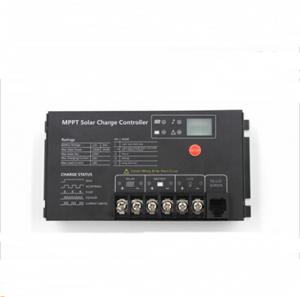Go Power Solar Charge Controllers MPPT Solar Charge Controller 10A 12/24V Tracer-1215RN
OKorder Service Pledge
OKorder Financial Service
You Might Also Like
All of our grid-tie inverters are UL listed and code-compliant. We do not stock refurbished grid-tie inverters.
Because grid-tie inverters have stricter requirements than off grid inverters, refurbished grid-tie inverters may not be code-compliant.
Check with your local electrician or building department before investing in a refurbished grid-tie inverter.
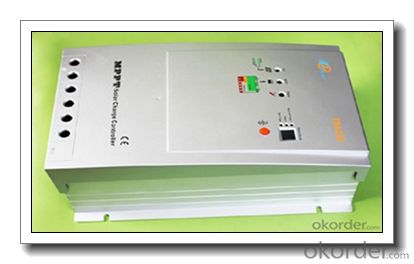
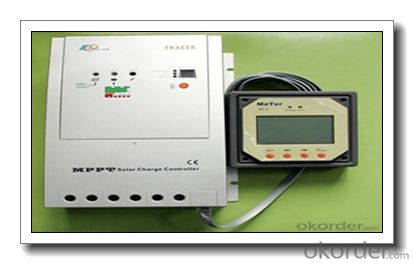
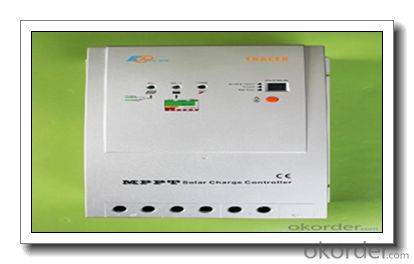
Specifications
MPPT controller
10A,12V/24V
Max PV input power 130W in 12V system, 260W in 24V system
ON/OFF, Dusk to dawn, 1-15h timer
Features:
· MPPT technology
· Peak conversion efficiency of 97 %
· High Tracking efficiency of 99%
· Several seconds tracking speed
· Very fast Sweeping of the entire I-V curve
· 4- Stage charge with PWM output
· Excellent thermal design and nature air cooling
· Full power output in ambient temperatures up to 45°C
· Temperature compensation function
· Sealed, Gel, Flooded battery type optional
· Diversified load control: Manual, Dusk to Dawn, dual timer, TEST
· RJ45 interface with optional remote meter
· Standard 2 years warranty
· CE certificate
Electronic Protections:
·PV short circuit protection
·PV reverse polarity protection
·PV overvoltage alarm protection
·PV over current protection
·Battery overcharge protection
·Battery over discharge protection
·Battery reverse polarity protection
·Load short circuit protection
·Load overload protection
Specification:
Model | Tracer-1210RN | Tracer-1215RN |
Rated system voltage | 12/24V auto work | |
Rated battery current | 10A | |
Rated load current | 10A | |
Max.battery voltage | 32V | |
Max.PV open circuit voltage | 100VDC | 150VDC |
Max.PV input power | 12V 130W; 24V 260W | |
Self-consumption | <10mA(24V) | |
Charge Circuit Voltage Drop | ≤0.26V | |
Discharge Circuit Voltage Drop | ≤0.15V | |
Communication | TTL232 / 8 pin RJ45 | |
Temp.compensation | -5mV/℃/2V | |
Working temperature | -35℃~+55℃ | |
Storage temperature range | -35℃~+80℃ | |
Humidity | 10%-90% NC | |
Enclosure | IP30 | |
Altitude | ≤3000m | |
Dimension | 156mm x 97mm x 68mm | |
Mounting holes | 147mm x 60mm | |
Mounting hole size | Φ5 | |
Terminal | 4mm2 | |
Weight | 0.55kg | |
- Q: Can a solar controller be used with different types of solar panel cleaning systems?
- Yes, a solar controller can be used with different types of solar panel cleaning systems as long as they are compatible with the controller's specifications and requirements. The controller's main function is to regulate and optimize the charging process of the solar panel system, regardless of the cleaning method being used.
- Q: How does a solar controller handle the protection against voltage fluctuations?
- A solar controller handles the protection against voltage fluctuations by constantly monitoring the voltage output from the solar panels. It ensures that the voltage is within a safe range and prevents any surges or drops that could potentially damage the connected batteries or other devices. The controller regulates the voltage by either diverting excess energy or increasing it if necessary, thereby providing a stable and consistent power supply.
- Q: What are the temperature compensation features in a solar controller?
- Temperature compensation features in a solar controller are designed to ensure optimal performance and efficiency of the solar system, regardless of the ambient temperature. These features help to counteract the effects of temperature fluctuations, which can significantly impact the charging and discharging processes of the solar batteries. One of the main temperature compensation features is the ability to adjust the charging voltage based on the temperature. As the temperature increases, the voltage required to charge the batteries effectively decreases to prevent overcharging. Conversely, as the temperature decreases, the charging voltage needs to be increased to compensate for the reduced battery efficiency. Another important temperature compensation feature is the ability to adjust the load disconnect voltage based on temperature. This feature ensures that the batteries are not discharged excessively in extremely cold temperatures, which can lead to irreversible damage. By raising the load disconnect voltage in colder temperatures, the solar controller protects the batteries from being drained beyond safe levels. Furthermore, temperature compensation features can also include temperature sensors that measure the ambient temperature and relay this information to the controller. This allows the controller to continuously monitor the temperature and make real-time adjustments to the charging and discharging processes. Overall, the temperature compensation features in a solar controller play a crucial role in maintaining the performance and longevity of the solar system. By accurately adjusting the charging voltage and load disconnect voltage based on temperature, these features help to optimize the efficiency and reliability of the solar system in various weather conditions.
- Q: Are there any compatibility issues with using a solar controller from one manufacturer with solar panels from another manufacturer?
- Yes, there can be compatibility issues when using a solar controller from one manufacturer with solar panels from another manufacturer. This is because different manufacturers may have varying specifications, communication protocols, and voltage requirements. It is important to ensure that the solar controller is compatible with the specific solar panels being used to avoid any potential performance or functionality issues.
- Q: What is the role of a solar controller in preventing battery over-voltage?
- The role of a solar controller in preventing battery over-voltage is to regulate the flow of energy from the solar panels to the battery, ensuring that the battery does not receive an excessive charge. The solar controller monitors the voltage level of the battery and automatically disconnects the solar panels when the battery reaches its maximum safe voltage. By preventing over-voltage, the solar controller helps protect the battery from damage and extends its lifespan.
- Q: What is the maximum load voltage that a solar controller can handle?
- The maximum load voltage that a solar controller can handle can vary depending on the specific model and manufacturer. However, in general, most solar controllers can handle load voltages ranging from 12 volts to 48 volts.
- Q: How does a solar controller prevent damage to the solar panels during hail or storm events?
- A solar controller prevents damage to solar panels during hail or storm events by disconnecting the panels from the electrical system. When it detects an extreme weather event, such as hail or a storm, the solar controller automatically shuts off the power flow from the panels, ensuring that no electrical currents pass through them. This prevents any potential damage that could be caused by the high winds, hailstones, or other hazardous conditions associated with such events.
- Q: How do I know if my solar controller is working properly?
- To determine if your solar controller is functioning properly, you can perform a few simple checks. Firstly, check if the controller's display is showing the expected information, such as battery voltage, charging status, or load settings. Secondly, verify that the controller is connected to the solar panels and battery system securely. You can also examine the controller for any physical damage or loose connections. Lastly, monitor if the controller is effectively regulating the charging and discharging of your batteries. If it appears to be correctly managing the power flow and maintaining the desired battery levels, then your solar controller is likely working properly.
- Q: How does a solar controller handle fluctuating solar panel output?
- A solar controller handles fluctuating solar panel output by regulating the voltage and current levels to ensure a stable and consistent charge to the battery or load. It monitors the incoming solar power and adjusts the charging parameters accordingly to optimize the charging process and protect the battery from overcharging or undercharging.
- Q: Can a solar controller be used with a solar-powered satellite navigation system?
- Yes, a solar controller can be used with a solar-powered satellite navigation system. A solar controller is responsible for regulating the amount of charge going into and out of the batteries, ensuring proper charging and preventing overcharging. It can be used to manage the power generated by the solar panels and efficiently distribute it to the satellite navigation system's battery for optimal performance and longevity.
Send your message to us
Go Power Solar Charge Controllers MPPT Solar Charge Controller 10A 12/24V Tracer-1215RN
OKorder Service Pledge
OKorder Financial Service
Similar products
Hot products
Hot Searches
Related keywords
